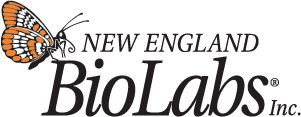 |
Experience is one thing you can't get for nothing. |
Home
Lab Resources
- Agarose Gel Electrophoresis
- Bacterial Streak Plate
- Bacterial Transformation
- DNA Ligation
- PCR
- Pipettors
- Plasmid DNA Isolation and Restriction Enzyme Digests
- Preparation of Agar Plates
Pre-lab Preparation
- Laboratory Citizenship & Performance
- BioSciences Lab Program Honor Code
- Molecular Biology Tips
- Writing Up Methodology
Additional Resources
Albert Einstein
Writing Up Methodology
For this assignment you will write the Materials and Methods section of a scientific research paper. This section should be the easiest of all to write, if you have good notebook skills. For many people, however, the difficult part is to address its true purpose. What this section does is document the methods that you employed in order to conduct your experiments. What it does not do is describe each of your specific experiments in detail. It is a write-up of the methodology, not a write-up of the study. A well-written Materials & Methods section allows a competent scientist to use your methods to duplicate your results or apply them to a different study with different objectives. It also allows a scientist to judge the scientific merit of your methodology.
Use specific, informative language to organize the material in a logical way. Keep in mind that chronological organization is not always best for scientific writing. Read pages 78-83 in Writing Papers in the Biological Sciences about conventions for writing this section and look over the suggestions listed below. It might also help to examine the more extensive material on writing research papers at http://www.ruf.rice.edu/~bioslabs/tools/report/reportform.html.
Specific suggestions:
- Include specific information about specialized materials
- You can usually combine the "materials" with the "methods" rather than have a separate subheading for materials
- Include sources of specialized chemicals, supplies, equipment, and biological materials only if they are not commonly found in a laboratory
- Include complete taxonomic information about any organisms that are used (genus, species, and specific strain, if applicable)
- Some information that should be recorded in your lab notebook will be of little use to another researcher and should be omitted from the materials and methods
- Generally omit names/models of equipment (e.g., Eppendorf microcentrifuge); just give the experimental details, such as acceleration (x g), time, and temperature for a centrifugation
- Generally omit describing the use of commonly stocked inorganic compounds, glassware, pipettors, stir plates, and so on; their use will be implicit in a well written set of procedures
- Write a complete and concise description of methods that you employed, presented in a logical order, which is not necessarily the actual order in which you performed the procedures
- Be careful that essential information is included, but be succinct when describing the protocols
- Strive for the minimum of information that would allow another competent scientist to duplicate your results
- Group related methodologies as a section; when appropriate, use subheadings and coordinate them with the Results section
- When a method is used that has been well described in another article, reference the specific article describing the method but outline the basic premise
- Only include information useful for repetition of your experiments, no unnecessary details
- Do not explain the rationale behind your choices; no explanations of any kind should be necessary
- Limit your descriptions to information that is essential for repetition of methods
- Choose verb tense and voice carefully; past tense is almost always necessary
- Avoid 1st person—put the emphasis on the research NOT the researcher!
- In this section it is usually necessary to use passive voice; methods do not conduct themselves
- It is generally considered inappropriate to write methods in the form of instructions; this style does not reflect the purpose of a materials and methods section
- Active voice (but not necessarily first person) is appropriate for other sections of a research paper
When you complete your first draft, ask yourself this question: Could someone else follow my words in this section and perform the same experiment with the same results?
Style and organization
- Type text in a font size of 12 points; use either Times, Times New Roman, or Cambria
- Print on 8.5 x 11 paper
- Use double spacing throughout
- Use one-inch margins
- ONE page limit
- Include your name, lab section, and date at the top of the page
- Use "Materials and Methods" for the major heading for the section; use SUBHEADINGS to break up the text
- Give abbreviations in ( ) immediately after the complete citation of the term within the text (abbreviations of some important biochemical compounds, e.g., ATP, NADH, DNA, and amino acids in proteins, need not be defined)
Evaluation
We will grade your Materials and Methods section according to the following criteria:
- Organization
- Clarity, conciseness, and professional style
- Inclusion of appropriate procedures
- Accuracy of the documentation
- Level of detail for each procedure (includes omission of unnecessary details)
Due dates
See information in OWL-Space.
We would like to thank New England Biolabs for their generous support of our laboratory program
Visitors: to ensure that your message is not mistaken for SPAM, please include the acronym "Bios211" in the subject line of e-mail communications
Created by David R. Caprette (caprette@rice.edu), Rice University 22 Jul 08, last updated 24 August 2014
Authored by Beth Beason, Ph.D., David Caprette, Ph.D., and Elizabeth Eich, Ph.D., Rice University
